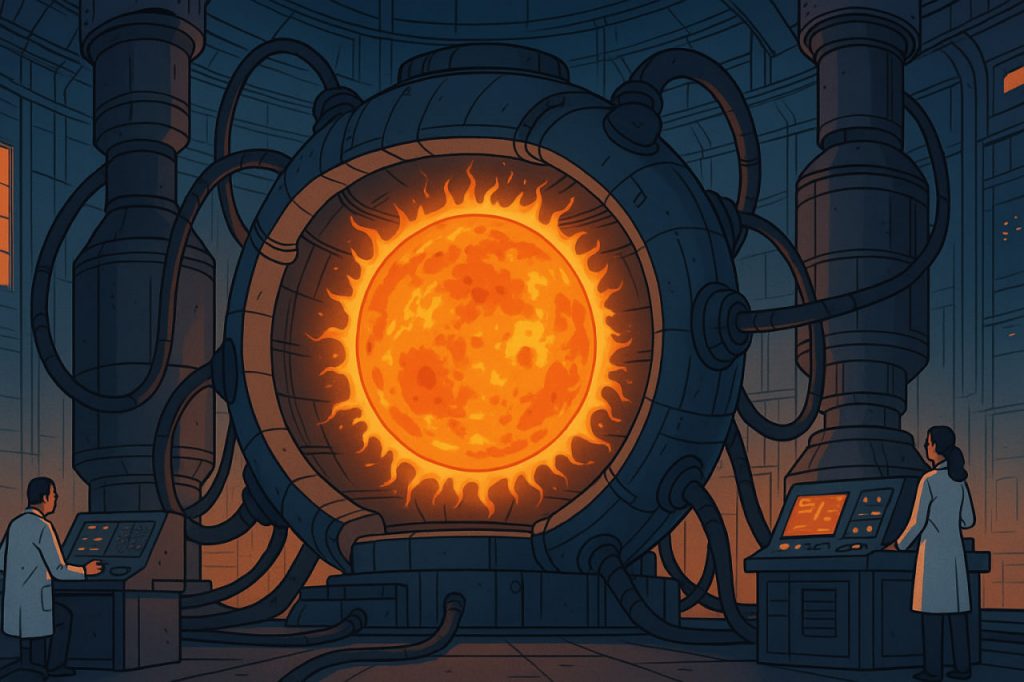Creating an artificial sun may sound like science fiction, but it is one of the most ambitious and exciting real-world scientific projects underway. At its core, the goal is to replicate the process that powers our natural sun—nuclear fusion—in a controlled, safe environment on Earth. This breakthrough could lead to nearly limitless, clean energy and a radical shift in how we power our world.
What Is an Artificial Sun?
The term “artificial sun” usually refers to massive experimental fusion reactors. Unlike conventional nuclear power plants that rely on fission (splitting atoms), these reactors aim to produce energy through fusion—combining atoms, typically hydrogen isotopes, at extremely high temperatures.
When atoms fuse, they release enormous amounts of energy, just like in the core of our Sun. Scientists hope to contain and control this energy in special devices called tokamaks or stellarators, where plasma is held in place by powerful magnetic fields.
Why Try to Replicate the Sun?
Fusion energy has several incredible advantages:
- Abundant fuel: Fusion uses hydrogen, which can be extracted from water.
- No greenhouse gases: Unlike burning fossil fuels, fusion doesn’t emit CO₂.
- No long-term radioactive waste: Fusion produces much less dangerous waste than traditional nuclear energy.
- No meltdown risk: Fusion is much safer; if a problem occurs, the reaction simply stops.
This makes fusion a potentially perfect energy source for the future—clean, safe, and nearly limitless.
Major Projects Around the World
One of the most famous fusion projects is ITER (International Thermonuclear Experimental Reactor) in France, a collaboration between 35 countries. Its goal is to demonstrate that large-scale fusion is technically and economically feasible.
China is also working on its version of an artificial sun, called EAST (Experimental Advanced Superconducting Tokamak), which has reached temperatures over 150 million degrees Celsius—several times hotter than the core of the real Sun.
Other projects like SPARC in the USA and JET in the UK are also making significant progress.
Challenges Ahead
Despite impressive milestones, fusion is still not ready for commercial energy production. Key challenges include:
- Maintaining stable plasma at extreme temperatures.
- Energy balance: Getting more energy out than is put in.
- Engineering durability under intense heat and radiation.
Solving these problems requires advanced materials, precise control systems, and decades of research.
The Future of Fusion Energy
While a working fusion power plant is still years—or even decades—away, the momentum is strong. Advances in superconducting magnets, AI control systems, and plasma physics are bringing us closer. If successful, fusion could revolutionize not just energy production, but also climate protection, space exploration, and global sustainability.
Glossary
- Nuclear fusion – A reaction where two atomic nuclei combine to form a heavier nucleus, releasing energy.
- Tokamak – A device using magnetic fields to contain hot plasma for fusion experiments.
- Plasma – A hot, electrically charged gas, often called the fourth state of matter.
- ITER – A major international project in France aiming to develop practical fusion power.
- Isotopes – Variants of an element’s atoms that differ in neutron number.


